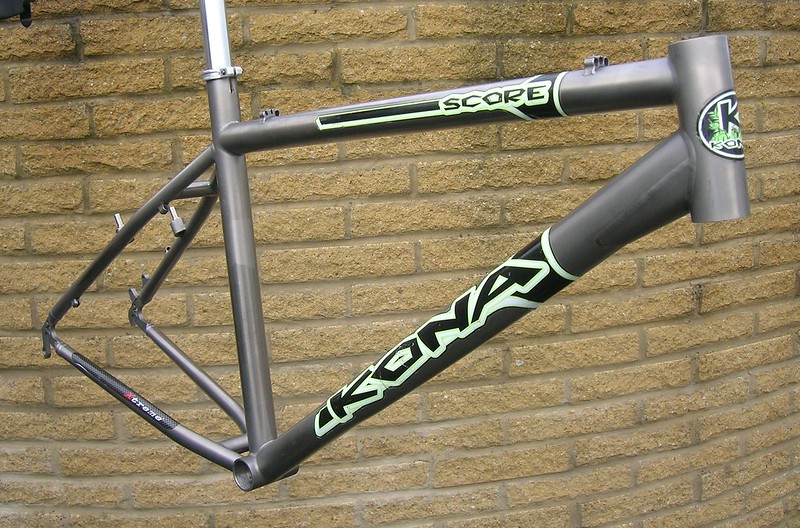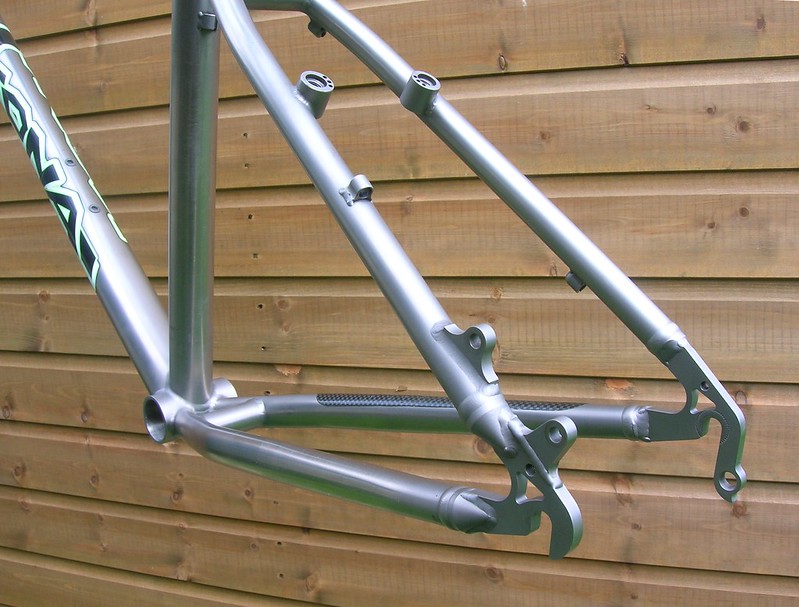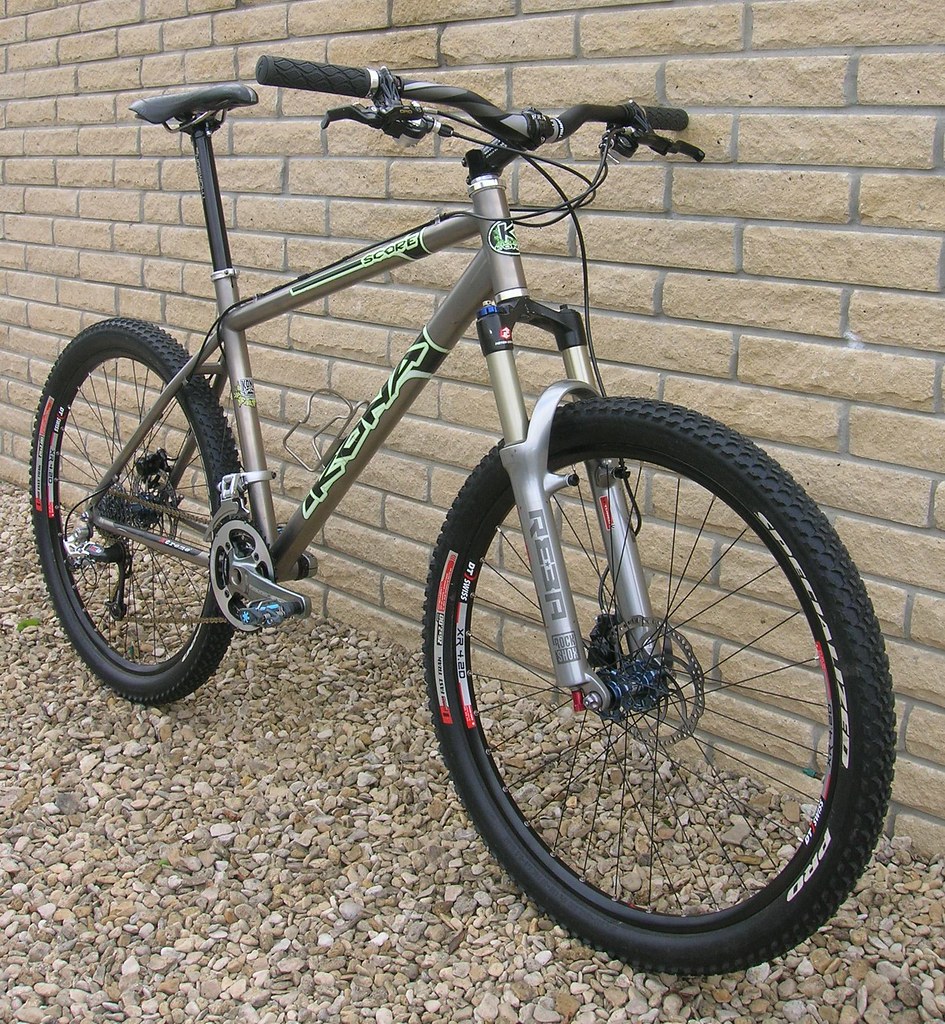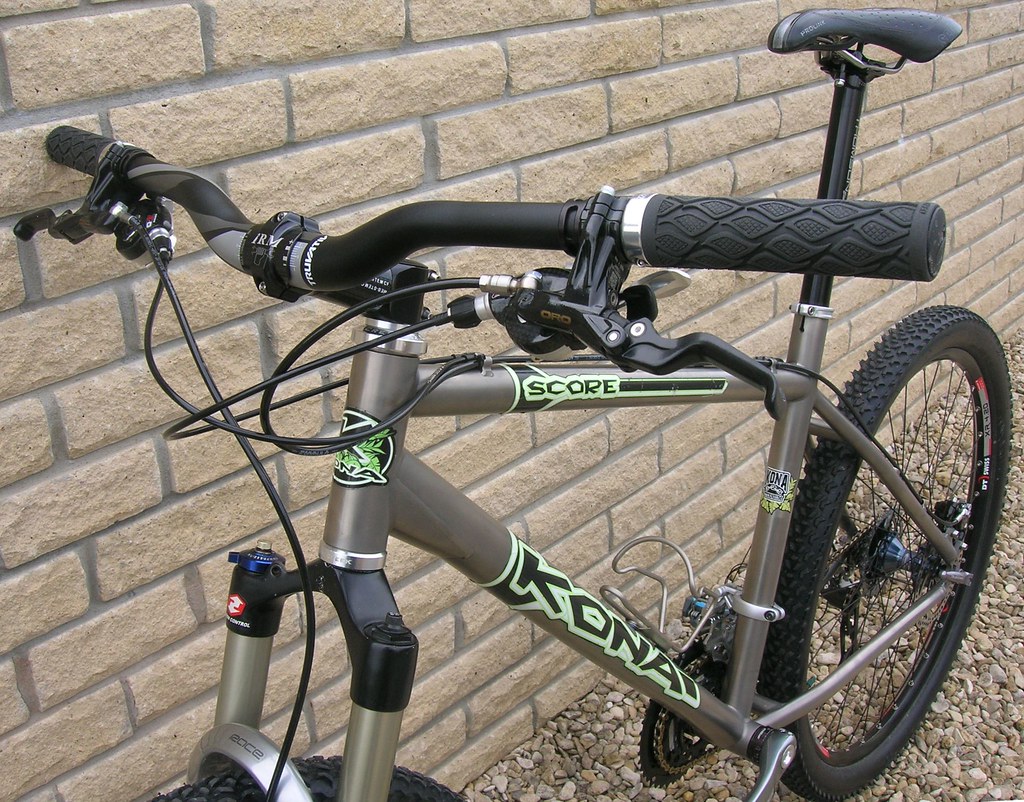By Ambassador Alasdair McAlley
This week we’re celebrating Pip’s Kona legacy. Today we’re focusing on Pip’s Score. Appearing for one year only, perhaps this was Kona’s most extravagant titanium bike. By the turn of the century, the out-of-bounds and free-ride movements were in full swing. Hardtails with slacker head-tube angles, longer top tubes, and more up-front travel (up to 120mm) were in demand.

By 2000, Kona has been producing titanium frames for 10 years, in partnership with Sandvik, with much success across the fledging downhill scene in the early 90s then later in the XC discipline. Riders loved the blend of strength, durability, and responsive trail feedback. Therefore, the Score was born, and incorporated specific design details that only appeared on this model including a multi-shaped reinforced gusseted downtube, 6/4 plate dropouts (for strength and better wheel alignment), and a CNC milled headtube. The frame weighs between 1670gm (3.6lbs) and 1905gm (4.2lbs) depending on the size.
What made Pip’s Score unusual was the size because it’s 18” and only three sizes were available at point of purchase: 15”, 17” and 17” long (longer top tube). The original production run was between 20 and 50 frames, but at some point, a further 50 were produced, with estimates totalling 50 15”, 40 17” and 10 17” long. It’s unknown how many 18” were produced; to date we know of two including Pip’s. Presumably 18” were produced for the taller rider.



The Score is a stunning frame with beautiful welds. The glow in the dark decals pop, and with the components Pip used, it made the bike look incredibly purposeful. He made the most of the option to run disc brakes and fitted Formula Oro K18s. He continued the grey aesthetic with a pair of 2007 Reba’s and awesome FSA Afterburner Mega Exo cranks.



Over to Pip on how it rides:
“Now that I have ridden a Score, I can say with certainty that there is something about the Score’s geometry that kicks newer machines; it has no wallowing gait. This higher front end / wider bar set-up makes me ride with a more ‘point and go’ approach.
The rear triangle on the Score has beefier seat and chain stays compared to my two 1997 King Kahuna frames. The Score’s stays are not only bigger in both height and width, but the chain stays are also ovalised towards the bottom bracket.
The Score does indeed have a more rigid feel to the back end compared to my King Kahunas and Hei Hei, and I had a blast of a time. The more forward reaching set up reminds me of my 1998 Hot. The wider bars on the Score are a bit of concern when riding down narrow tracks, but out along the wider trails, it is a beaut of a machine. A round of applause.”

Working with titanium is very costly, especially with a limited run, custom design, so production ended before the end of the year.
All of Pip’s bikes are with new owners now, and through his registry and these articles, his memory lives on. Stay tuned for the next installment.

